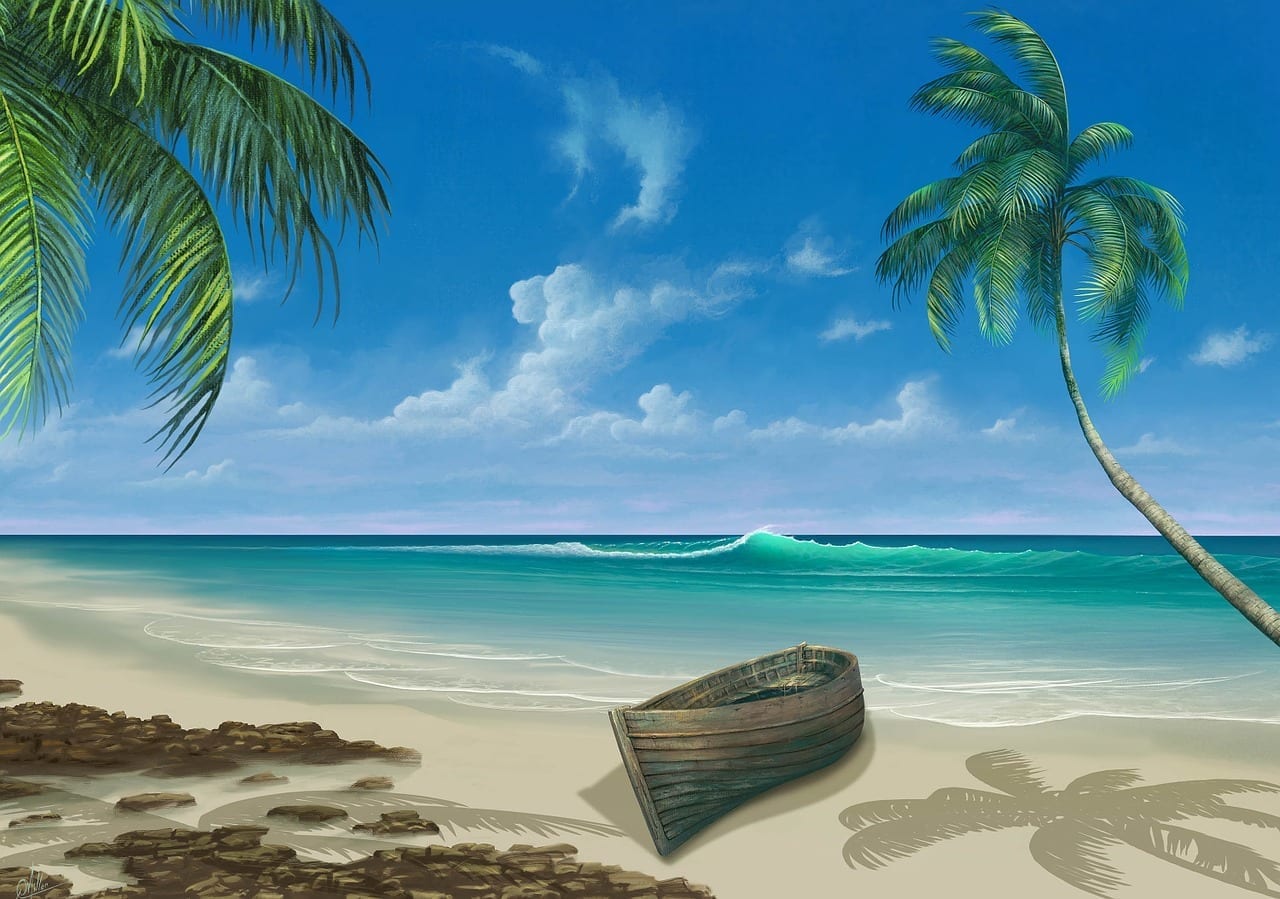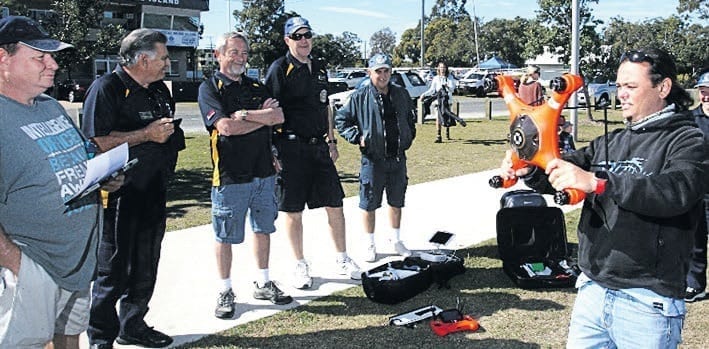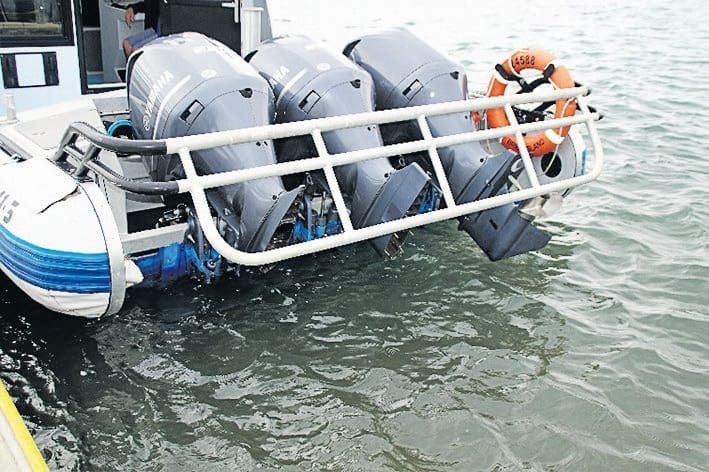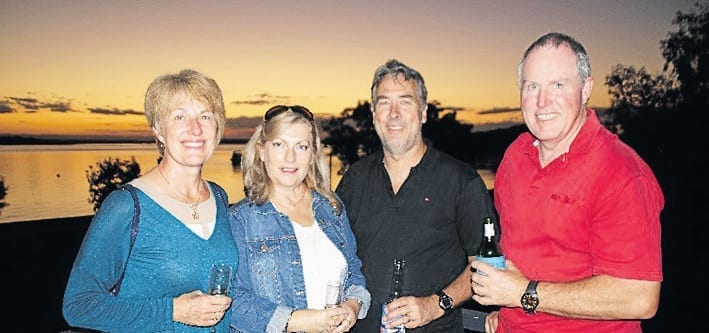Tags: Boating safety tips. Volunteer marine rescue Queensland. Bribie Island
YEARLY RADIO ROOM STATISTICS
To 25th August 2018 8197 Calls, 2323 vessels logged on, 165 Vessel Assists, 77 Overdue vessels, 20 Vessel Tracking, 864 Sitreps, 415 Requests, 924 Radio Checks, 8 Securite Broadcasts, Mayday Calls 1. VHF calls 78.5%, – 27MHz calls 10.2%
AUGUST VESSEL ASSISTS:
WED 01/08 0457am – 15m Cruiser member with no forward gears, required a tow from Tangalooma to Scarborough Marina for repairs.
WED 01/08 0743am – 9m ½ Cabin member, sunk 130m North of Beachmere Ramp on the Eastern side of Caboolture River required a tow to Monty’s Marina, Beachmere.
WED 01/08 1403pm – 4.9m Tinny member broken down at Bongaree, just as Bribie Two left the pontoon we were advised that the tow was not required as vessel had restarted OK.
SAT 04/08 1431pm – 8m Cruiser member with engine problems, required a tow from Cape Moreton to Spinnaker Sound Marina.
SUN 05/08 0904am – MOP reported 9m Cruiser dragging anchor and beached at Bongaree, investigate. SUN 05/08 1517pm – 8m Cruiser member with electrical problems, required a tow from Tangalooma to Pacific Harbour Canal.
MON 06/08 0523am – Tasked by VKR for search for person reportedly jumped off South side of Bribie Bridge, also RSL Redcliffe and a helicopter were also activated.
MON 06/08 0911am – 9.5m Cruiser member reported drifting toward beach near Pacific Harbour.
WED 08/08 1302pm – 9.8m Cruiser reported sinking 200m off Toorbul. Investigated advised VKR owner contacted and attended – all OK.
THU 09/08 – 1332pm – 5m Runabout non-member out of fuel at Skirmish Point, required a tow to Bellara Ramp.
WED 15/08 1500pm – 4m runabout non-member with a flat battery requiring a jump start, couldn’t start, required a tow to Spinnaker Sound Marina from South of Bribie Island.
SAT 18/08 1602pm – 4m Runabout member, motor won’t start, required a tow to Tradewinds Canal.
SAT 18/08 1830pm – 2030pm: Sandstone Point Hotel Strawberry Festival Fireworks exclusion zone patrol.
SUN 19/08 0741am – 11m Cruiser non-member requested a jump start, but was unsuccessful and required a tow to from Sylvan Beach to Newport.
MON 20/08 1225pm – 12m Monohull vessel drifting at Spitfire Banks, required a tow to Bongaree Jetty.
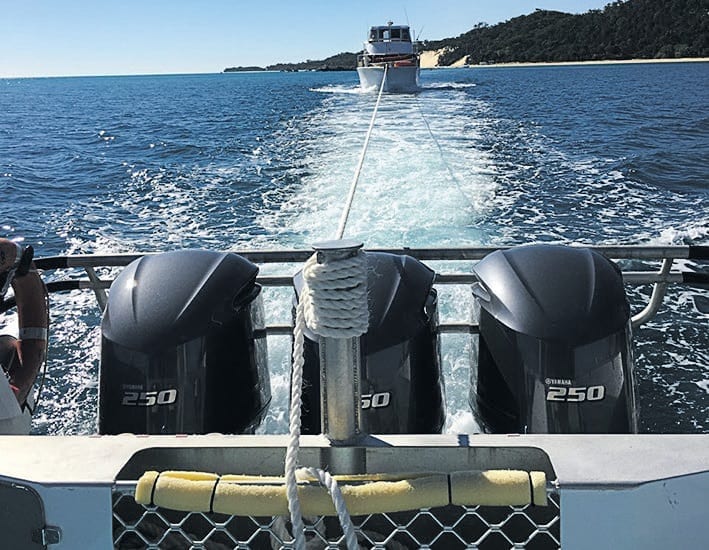
An Assist in the form of a tow from Tangalooma to Scarborough, a 15-metre flybridge cruiser, with no forward propulsion was towed to Scarborough for repairs, crew and passengers were transported back to Bribie Island. Bribie One was crewed by Skipper Bob Skinner and very able crew of Ian Grimes, Doug Lythgo and Ces Luscombe
DRONE DEMONSTRATION
Wednesday 1st August 2018 VMRAQ have been evaluating how drones could be useful to its squadrons operations. Tom Hudson VMRAQ State Training Officer and drone pilot Brendan Archie demonstrated the “Swell 3 Drone” at VMRBI Base
REPLACEMENT GEARBOXES FOR BRIBIE ONE:
Tuesday 7th August 2018 Northside Marine has replaced the gearboxes of the port and centre outboard motors on Bribie One under warranty. Uneven wear on the drive shafts allowed the ingress of water, which mixed with the gearbox oil, necessitating the withdrawal from service for Bribie One last week. Thanks to Northside Marine they were promptly replaced this morning promptly returning Bribie One back into service. The seals will be checked on the starboard gearbox and most likely be replaced in the immediate future.
BRIBIE THREE REFURBISHMENT
Wednesday 8th August 2018 Bribie Three refurbishment by Swift Marine of Molendinar is now complete and she is back at VMRBI for final fit out. At a cost of around $36,000, the extensive refurbishment has returned her to an almost new condition.
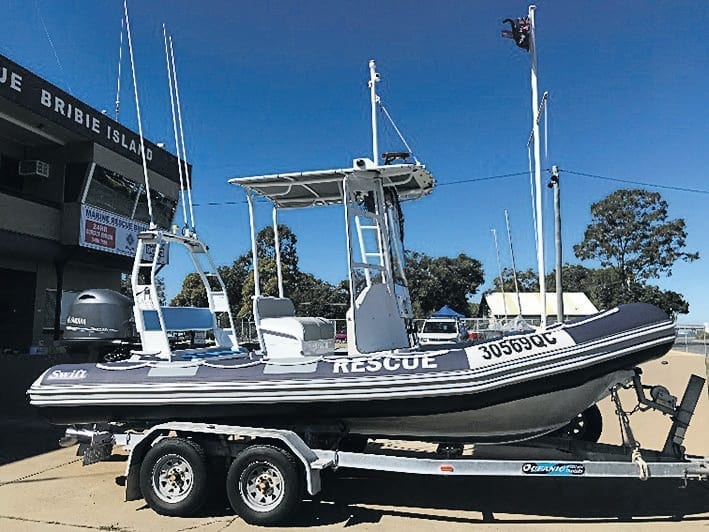
Bribie Three – almost new again
HAPPY HOUR
Friday 10th August 2018 With 5 Fridays this month, we were once again blessed with beautiful conditions for our Happy Hour. 21 members and guests turned out to watch hundreds of little black cormorants binge on bait fish with one of our renown sunsets as a backdrop.
TRIM YOUR BOAT
Boating Safety – Compiled by VMRBI Coxswain Simon Middap
It’s not all about the trim button! The ability to trim your vessel properly is both a safety and an efficiency issue. It is certainly possible to swamp or overturn a boat simply because it’s badly trimmed. It is very important indeed to understand trim and how to adjust it to suit different conditions, even more so in open water. Before getting into the effects of the dreaded “trim” button, it’s necessary to understand trim – and that begins at the same place in any boat – weight distribution, BEFORE you move the vessel.
It’s a skipper’s responsibility to ensure weight is distributed appropriately before a boat ever moves from a ramp or mooring. Positioning of passengers, iceboxes, portable fuel tanks and, in fact, any gear heavy enough to affect weight distribution and the stationary trim should be reviewed EVERY time a boat is loaded. Passengers can be asked to move and anything that’s not bolted down changed around to redistribute weight as necessary, even during the voyage. Remember too that you may need to move a fuel tank or an icebox as fuel is consumed or an icebox emptied.
Generally speaking then, static or stationary trim is about common sense; about simply balancing a boat by distributing weight to keep the hull floating level in the water or sometimes it may be better to bias some weight aft, but never bias to the bow. Bow down is never a good idea, a heavy bow boat won’t steer well making manoeuvring dangerous and take longer than they should to get onto the plane using excessive amounts of fuel. The overall concept of understanding trim is especially important in smaller vessels and dinghies that do not have any form of mechanical trim capability. Small outboards adjust manually by moving a pin along a series of holes in the mounting bracket altering the angle thrust from the propeller and the attitude (or trim,) of the boat to the water accordingly.
The motor trim button or trim tabs – speed trim.
Once a hull moves, speed introduces the effects of the hull’s hydrodynamics and speed magnifies the interaction between hull and surface conditions, wind chop, waves etc. At speed, appropriate trim for travel in one direction relative to a prevailing sea or even a substantial wind chop may not be appropriate for another. In larger vessels, speed trim adjustment at the literal touch of a switch is provided on planing powerboats – because it’s necessary to adjust trim to suit as and when conditions or direction of travel change. There are two common mechanisms of adjusting at speed trim: One of these is trim tabs (not fitted to every vessel), a pair of adjustable tabs or flaps mounted on the transom, which work much like the wing flaps on an aircraft.
Trim tabs work by adjusting (usually electric/hydraulically at the touch of a switch) the tab up away from contact with the passing water; or down (trimming in, or digging the tabs in) further into the water. Adjust the tabs down, into harder contact with the water if you like, and the aft end lifts and the bow lowers. Adjust them up, easing contact with the water, and the transom squats lower and the bow rises. The other is the trim button provided to adjust the angle of an outboard or sterndrive drive leg relative to the transom.
At speed with an outboard or sterndrive, adjusting the propeller closer to the transom, commonly referred to as trimming in, raises the transom and pushes the bow down. Trimming out, adjusting the leg away from the transom, lowers the stern and raises the bows. It’s important to stress, that while at speed trim adjustments will to some extent compensate for uneven weight distribution, they should never be used for that.
Here are the steps to properly trim a planing-hulled powerboat using the trim button:
1. With the engine in neutral, use the trim switch to tilt the drive down as far as it will go. Monitor the engine trim gauge (if present) or note the change in sound from the tilt motor that signals that the engine is trimmed fully down.
2. Put the engine into forward gear and throttle up steadily to cruising speed, noting the reading on your speedometer, GPS, or tachometer.
3. Using the trim switch, slowly tilt the engine up. You should feel the boat’s attitude toward the water change, with a slight rise of the bow, a lift of the entire boat, and an increase in speed.
4. Continue to tilt the engine up until you note a slight drop in speed from the GPS or speedometer, a sharp rise in the engine’s rpm, or until you hear your propeller begin to ventilate. The boat may also begin to “porpoise” or pound the water in a rhythmic pattern when the drive is trimmed too far up.
5. Tilt the engine down in small increments until the maximum speed/ consistent rpm is again reached, and/or no ventilation is noted. At that point, the boat is properly trimmed and operating at maximum efficiency.
From there, you may want to make adjustments to the trim to offer a more comfortable ride. For example, trimming the bow down a bit in a chop may decrease pounding from waves — but may also increase the amount of spray. Experience and experimenting with the engine’s trim functions will soon show you the best attitude for your boat and its load on a given outing.
Quite fine adjustments can make dramatic differences to how a boat handles, especially at sea. It takes a while to attune yourself to this and when not au fait with a particular boat’s individual character, the rougher the water, the harder it is to discern actual trim angles. To accelerate to planing speed, nearly all hulls like their tabs down, and/or their drive leg trimmed in. So, to start our familiarisation process, trim the leg all the way in, and/or apply maximum downward angle of the tabs, then give the throttle a burst to boost the hull onto the plane.
As a rule of thumb, an indication of good calm water trim angles is when the steering goes light. Try it a few times. Trim in/down and out/up until you feel this freeing or lightening in the steering. If you keep on trimming out, the propeller will eventually reach an angle where it goes too far and loses grip, revs climb and speed decreases. Knowing where this happens is important when adjusting trim for different sea conditions.
Then, find somewhere with plenty of room and not many other boats about and try some reasonably tight turns. You’ll find that trimming in prior to a turn allows tighter turns before the propeller loses grip. And trimming out for straight running gives more speed without applying any more throttle. When encountering surface chop, particularly smaller boats will deliver an unnecessarily bumpy ride if left trimmed at calm water angles.
Ride quality is improved significantly by trimming in, lowering the bow and using the sharpest part of the hull to slice through rather than crashing into the bumps. When travelling upwind, trimming in has other benefits too. It helps counteract the lifting effect of wind under the bows, which can be quite noticeable in lighter boats. At sea, in trim also minimises the tendency of the bows to loft into the air as the boat crests after climbing the steeper downwind side of a swell. In big swell conditions, it may become necessary to actually accelerate up the face of a swell and ease off for the crest, allowing the bows to drop gently onto the backside of the wave.
Further information on marine safety can be sourced from https://www.msq.qld.gov.au/Safety/ or watch out for VMR Bribie Island’s information sessions on boating and safety http://www.vmrbribie.com/.
Other Articles
https://thebribieislander.com.au/june-vmr-bribie-island/
